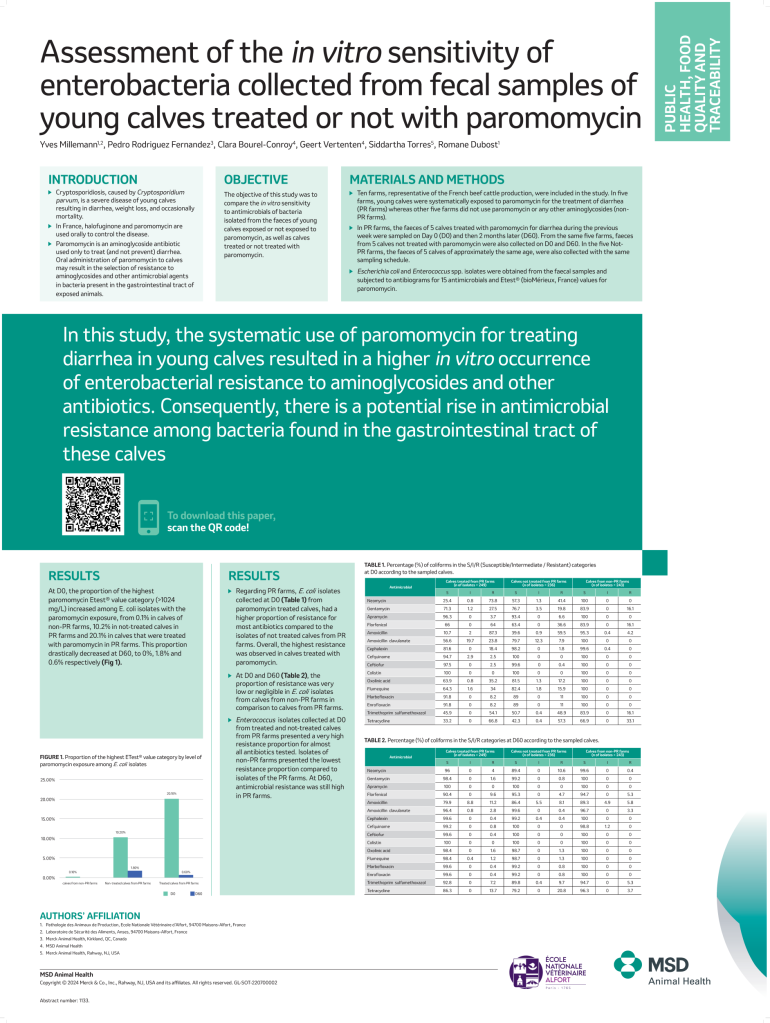Public Health, Food Quality & Traceability
Assessment of the in vitro sensitivity of enterobacteria collected from fecal samples of young calves treated or not with paromomycin
Yves Millemann1,2, Pedro Rodriguez Fernandez3, Clara Bourel-Conroy4, Geert Vertenten4, Siddartha Torres5, Romane Dubost1
In this study, the systematic use of paromomycin for treating diarrhea in young calves resulted in a higher in vitro occurrence of enterobacterial resistance to aminoglycosides and other antibiotics. Consequently, there is a potential rise in antimicrobial resistance among bacteria found in the gastrointestinal tract of these calves

The effects of calves fed colostrum from dairy cows treated with first generation cephalosporin dry cow treatments on selection and spread of antimicrobial resistance in dairy calves
D. C. Speksnijder1,2, Q. Lu1, S. Sietsma2, A. Timmerman1, J. M. Swinkels3, A. L. Zomer1
Drying off cows, harbouring CTX-R E. coli in their gastrointestinal tract, with either cloxacillin or cefapirin did not result in significantly different faecal CTX-R E. coli counts in neonatal calves born from these cows. Variations in faecal CTX-R E. coli counts were large in calves within both study groups, indicating that possibly, other cow or farm related factors are of greater influence for selection and transmission of ESBL-pE via the calf.

